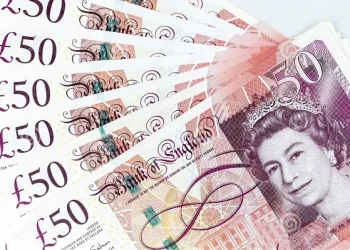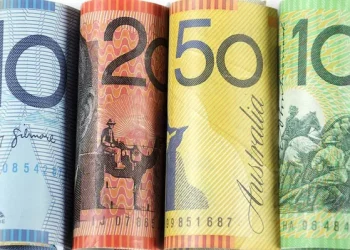The foreign exchange (forex) market is one of the most dynamic and liquid financial markets in the world. Traders, investors, and even ordinary individuals participate in currency conversions for a variety of reasons, including business transactions, travel, and investment opportunities. One of the most commonly exchanged currencies is the U.S. dollar (USD), which serves as a global benchmark. The Philippine peso (PHP), on the other hand, is the official currency of the Philippines and is widely traded in the forex market, especially among investors with interests in the Southeast Asian region.
For individuals or businesses looking to convert 1,100 U.S. dollars (USD) to Philippine pesos (PHP), it is crucial to understand exchange rates, market trends, and factors influencing currency fluctuations. This article provides insights into forex trading strategies, exchange rate determinants, and potential financial impacts of converting USD to PHP.
Understanding Exchange Rates
An exchange rate is the value of one currency in relation to another. The USD to PHP exchange rate tells us how many pesos one U.S. dollar can buy. Exchange rates fluctuate due to supply and demand dynamics, economic policies, and global market conditions.
For example, if the exchange rate is 1 USD = 55 PHP, then 1,100 USD would be worth 60,500 PHP. However, exchange rates change frequently due to the following factors:
Economic Indicators: Gross Domestic Product (GDP), inflation rates, and employment reports affect currency values.
Central Bank Policies: The Bangko Sentral ng Pilipinas (BSP) and the U.S. Federal Reserve influence interest rates, affecting the supply and demand of their respective currencies.
Market Sentiment: Investor confidence, geopolitical stability, and risk appetite contribute to fluctuations.
Supply and Demand: The more demand there is for the U.S. dollar compared to the Philippine peso, the higher the USD will be valued against the PHP.
Forex Trading Strategies for USD to PHP
If you are trading forex or simply looking for the best time to exchange your USD for PHP, utilizing the right strategy can help maximize your returns.
1. Spot Trading
Spot trading is the most common method of exchanging currencies at the current market rate. If you need pesos immediately, the spot exchange rate is the best available price at that moment.
Pros: Immediate execution, real-time rates
Cons: May not be the most favorable rate if market conditions are volatile
2. Forward Contracts
A forward contract allows traders to lock in an exchange rate for a future date. This strategy is beneficial if you expect the peso to depreciate against the dollar.
Pros: Protection against unfavorable currency fluctuations
Cons: Locked rates may not be beneficial if market conditions shift unexpectedly
3. Hedging
Hedging involves using financial instruments like options and futures to protect against adverse currency movements. Businesses that frequently deal with USD to PHP conversions often use hedging strategies to manage risks.
Pros: Reduces uncertainty in exchange rates
Cons: Can be complex and may involve additional costs
4. Monitoring Economic Indicators
For forex traders, staying informed about economic data releases from both the U.S. and the Philippines can help predict currency movements. Some key indicators include:
- U.S. Federal Reserve interest rate decisions
- Philippine inflation rates
- Trade balances between the two countries
- Remittance flows from overseas Filipino workers (OFWs)
5. Technical and Fundamental Analysis
Technical Analysis: Uses historical price charts and indicators to predict future currency movements.
Fundamental Analysis: Focuses on macroeconomic data, political stability, and monetary policies.
Best Time to Convert 1,100 USD to PHP
The forex market operates 24 hours a day, five days a week, making it essential to choose the right timing for conversions. Here are some considerations:
During High Liquidity Periods: Forex trading volumes peak during overlapping market sessions, such as when the U.S. and Asian markets are open.
When the Peso Strengthens: If the PHP appreciates, it means you get more pesos per dollar.
Before Major Economic Announcements: Unexpected policy changes can cause sudden currency fluctuations.
During Seasonal Trends: The peso typically strengthens during peak remittance periods (e.g., December when overseas Filipinos send money home for the holidays).
Currency Conversion Costs
When converting USD to PHP, be mindful of transaction costs:
Bank Spreads: Banks and money exchangers add a margin to the exchange rate, which can vary.
Transfer Fees: Online money transfer services like PayPal, Western Union, and Wise charge fees for sending money across borders.
Foreign Exchange Platforms: Forex brokers may offer better rates than banks but might charge commissions.
Impact of USD/PHP Exchange Rates on Businesses and Individuals
For Businesses
Exporters: A weaker peso benefits exporters, as they earn more PHP for each USD received.
Importers: A stronger peso reduces costs for businesses that purchase goods in USD.
Investors: Forex traders and investors analyze exchange rate movements for profit opportunities.
For Individuals
OFW Remittances: A stronger USD means higher remittance value for families receiving money from abroad.
Travelers: A weaker peso makes international travel more expensive for Filipinos.
Real Estate Buyers: Foreign investors may find Philippine properties more attractive when the peso weakens.
Conclusion
Exchanging 1,100 USD to PHP may seem straightforward, but understanding forex market dynamics can help you make more informed decisions. Whether you are a trader, an investor, or an individual sending money abroad, leveraging the right strategies and timing your transactions wisely can make a significant financial difference.By staying informed and proactive, you can optimize your forex transactions and potentially gain better returns when converting 1,100 USD to PHP.
Related Topics:


























